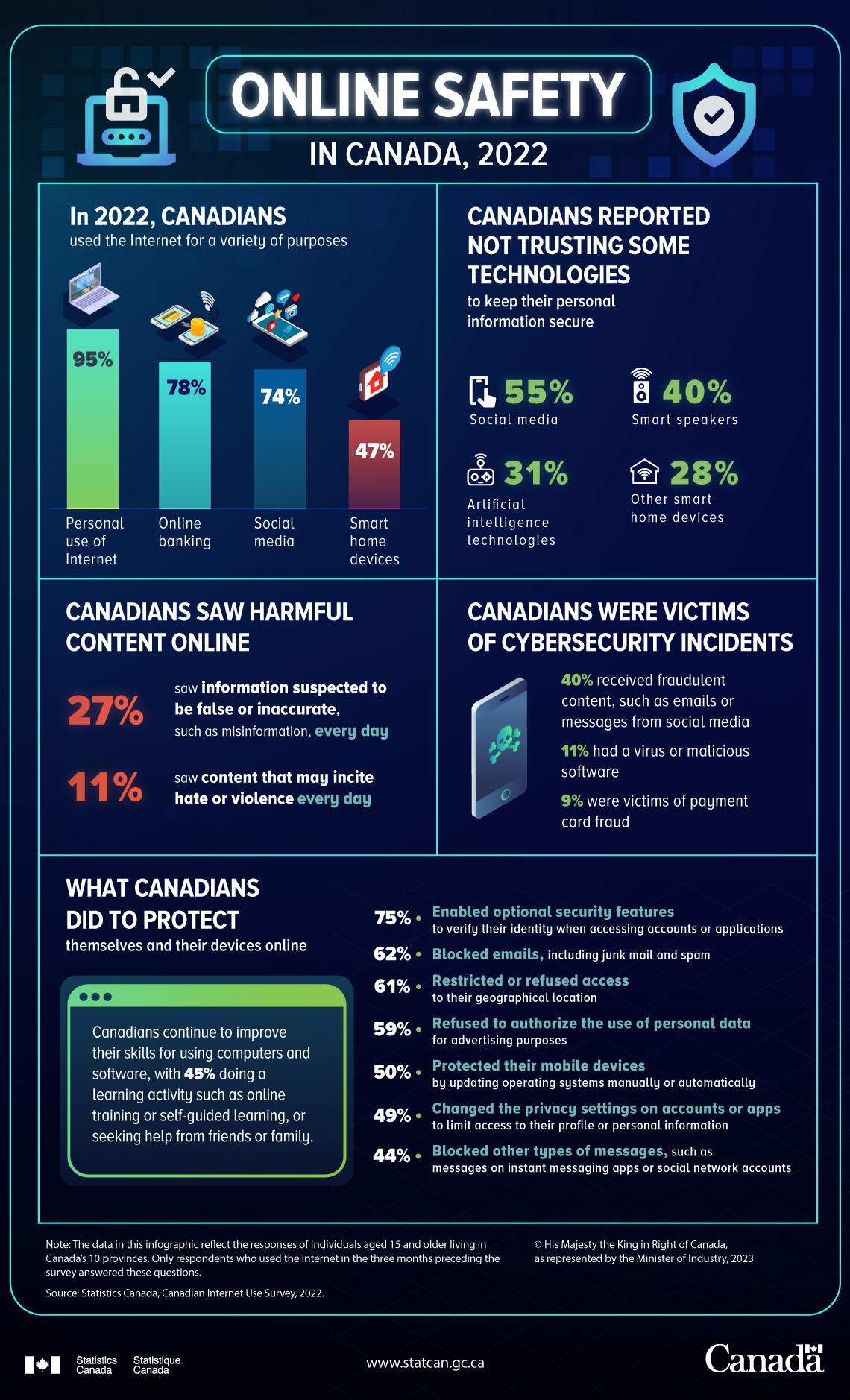Statistics Canada recently released data from its Canadian Internet Use Survey, 2022. In late June, I wrote about “Trusted sources for telecom data” and pointed to its “Telecommunications: Connecting Canadians” page, a subset of its “Digital economy and society statistics” portal.
 The 2022 Canadian Internet Use Survey was actually conducted between December 2022 and April 2023. Although Statistics Canada has been conducting its Canadian Internet Use Survey for many years, the agency cautions against comparing data prior to 2018 because of changes in design.
The 2022 Canadian Internet Use Survey was actually conducted between December 2022 and April 2023. Although Statistics Canada has been conducting its Canadian Internet Use Survey for many years, the agency cautions against comparing data prior to 2018 because of changes in design.
While the Canadian Internet Use Survey covers just the 10 provinces, a companion article was issued last year, “Canada’s Far North less remote than meets the eye”. According to that article, “in 2021, 88% of those living in the Northern Territories said they had used the Internet over the past three months and 90% over the past 12 months. By way of comparison, in 2020, 92% of Canadians living in the provinces said they had used the Internet over the previous three months. The overwhelming majority (97%) of non-Indigenous Northerners used the Internet over the past year, compared with just over three-quarters of Indigenous people living in the North.
There were a number of notable observations in last week’s release of the Canadian Internet Use Survey:
- Internet use among Canadians aged 15 years and older rose to 95%, an increase from 92% in 2020; the biggest increase was among Canadians aged 75 years and older, increasing to 72% in 2022, up from 62% in 2020;
- The proportion of Canadians with home Internet access “remained stable in 2022 compared with 2020, at 94%, but the proportion of Canadians who reported having a download speed of 50 megabits per second (Mbps) or more increased”: 87% had a download speed of 50 Mbps or more, compared with 72% in 2020;
- 84% of Canadians had a personal mobile internet data plan in 2022;
- 2% reported having only a mobile data plan with no home Internet connection.
In addition to the infographic reproduced here, Statistics Canada provided a number of tidbits regarding Online Safety.
In 2022, 8% of Canadians felt victimized by an incident online, such as incidents related to bullying, harassment and discrimination, or related to the misuse of personal pictures, videos or other content. Among various age groups, younger Canadians aged 15 to 24 years (11%) had the highest proportion of people who felt victimized online.
About half (51%) of Canadians said that they had seen content online that may incite hate or violence, and three-quarters (73%) of Canadians reported that they had seen content online that they suspected to be false or inaccurate, such as misinformation.
As I said last month, for reliable facts and statistics I start with government agencies, especially the data produced by Statistics Canada.
